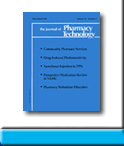 |
 |
PHARMACOLOGIC REGULATION
OF THE RENIN–ANGIOTENSIN SYSTEM: PHYSIOLOGIC AND PATHOLOGIC EFFECTS
Sara B Jutte and Jon E Sprague
To request full article click here.
OBJECTIVE: To review the physiologic and pathologic roles of the renin–angiotensin system in maintaining blood pressure, glomerular filtration rate, and myocardial tissue growth. The pharmacologic regulations of the pathologic effects of the renin-angiotensin system are emphasized, with a comparison between angiotensin-converting enzyme (ACE) inhibitors and angiotensin1 receptor (AT1) antagonists.
DATA SOURCES: English-language basic science, clinical studies, and review articles were identified using MEDLINE, IOWA, and a manual search from January 1966 through September 1999. References were also obtained from the reference section of relevant published articles.
STUDY SELECTION AND DATA EXTRACTION: All articles identified were evaluated for possible inclusion in this review. Evaluative and comparative data from basic science and controlled clinical studies were reviewed.
DATA SYNTHESIS: The renin–angiotensin system has a plethora of physiologic and pathologic roles in the regulation of blood pressure, renal function, and cell growth. The cellular mechanisms involved in eliciting the responses to the renin–angiotensin system are discussed in detail, with an emphasis on the pharmacologic regulation of the cellular responses. The role of angiotensin II in maintaining blood pressure, glomerular filtration rate, and in regulating myocardial cell growth secondary to myocardial infarction or as a complication of congestive heart failure are all reviewed. The ACE inhibitors and AT1 antagonists have comparable pharmacologic effects that can influence their therapeutic application. The ACE inhibitors and AT1 antagonists are compared regarding clinically and experimentally observed differences that may affect their therapeutic application.
CONCLUSIONS: The physiologic and pathologic roles of the renin–angiotensin system make the ACE inhibitors and AT1 antagonists ideal candidates in treating many conditions. Presently, few studies have been conducted that directly compare ACE inhibitors and AT1 antagonists. An understanding of the basic underlying pharmacologic principles is essential when attempting to apply the scientific and clinical information of the ACE inhibitors and AT1 antagonists with the intention of extrapolating to therapeutic utility.
J Pharm Technol 2000;16:138-46.
To order the complete CE article click here.
To request full article click here.
|
|
|
||
|

